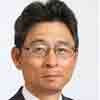TCAD Simulation of Wide Bandgap Power Devices
Simulation of wide bandgap power devices has always posed convergence challenges. In addition to this the emphasis is shifting to accuracy and calibration of models relative to manufacturing data. This webinar will focus on simulation of silicon carbide (SiC), gallium nitride (GaN) and gallium oxide (Ga2O3) power devices. For each case, simulation results and calibration techniques will be described. Finally, we will also cover stress simulations and introduce upcoming process simulation capabilities for wide bandgap materials.
What attendees will learn:
- 4H-SiC IEMOSFETsimulation
- Specify the interface defects Dit
- A mobility model including the remote-scattering effect due to interface charges
- GaN Super HFETsimulation
- Polarization charges: 2DHG, 2DEG at the double-hetero interface GaN/AlGaN/GaN
- Specification of defects in the GaN buffer layer
- Breakdown simulation
- Ga2O3 simulation
- Affinity, bandgap (4.8eV)、effective density of state (electron and hole)
- How to deal with convergence problems
- Stress simulation of wide bandgap devices
- Upcoming wide bandgap process simulation capabilities
Presenter
 Masato Fujinaga serves as the TCAD Applications Engineering Manager at Silvaco Japan and has been working for the company since 2010. From 2006 to 2010 he worked for TCAD international Inc and prior to that from 2003 to 2005, he worked in Renesas Technology Corporation. From 1997 to 2003, he was engaged in TCAD applications such as DRAM/Flash memory devices and logic transistors for ULSI development. During this time he also participated in the development of 3D TCAD at Semiconductor Leading Edge Technologies Inc.. He started his career in 1985 at the LSI /ULSI development laboratory of Mitsubishi Electric Corporation, where he engaged in the development of TCAD process and device simulators.
Masato Fujinaga serves as the TCAD Applications Engineering Manager at Silvaco Japan and has been working for the company since 2010. From 2006 to 2010 he worked for TCAD international Inc and prior to that from 2003 to 2005, he worked in Renesas Technology Corporation. From 1997 to 2003, he was engaged in TCAD applications such as DRAM/Flash memory devices and logic transistors for ULSI development. During this time he also participated in the development of 3D TCAD at Semiconductor Leading Edge Technologies Inc.. He started his career in 1985 at the LSI /ULSI development laboratory of Mitsubishi Electric Corporation, where he engaged in the development of TCAD process and device simulators.
He received his B.S. and M.S. degrees in Physics from Osaka University, Japan, in 1983 and 1985, respectively. In 1996, he received the Ph.D degree in electronics engineering from Osaka University.
When: May 24, 2016
Where: Online
Time: 10:00am-11:00am – (PST)
Language: Japanese
WHO SHOULD ATTEND:
Process engineers, device engineers and researchers working on wide bandgap power device development

